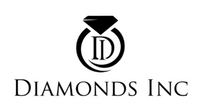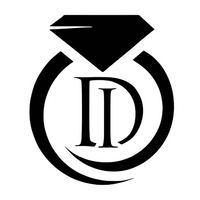Learn About Diamonds
Types of Diamonds
Natural Diamonds
Natural diamonds form deep within the Earth under extreme conditions of heat and pressure. They are comprised of nearly 99.95% carbon, with the other 0.05% reflecting trace elements that aren't part of their essential chemistry — making diamond the only gemstone constructed of a single element. They are the hardest naturally occurring material found on Earth and one of the most sought-after.
Lab Diamonds
Lab diamonds are optically, chemically, and physically the same as natural diamonds. In other words, they look, feel, and are identical. Their difference lies only in their origins — natural diamonds form within the Earth, and lab diamonds are grown by professionals with specialized equipment. Another difference relates to cost; as lab grown diamonds are less rare than natural diamonds, they often come at a much more accessible price.

4 C's of Diamonds
CARAT
Carat is a unit of measure used for diamonds and is one of the most misunderstood terms. The term carat refers to the weight of the diamond rather than the visual “size” as most people think. When comparing diamonds you will want to consider the cut as well, as diamonds cut too deep or too shallow may look bigger or smaller than similar carat weight diamonds with a very good or excellent cut.
Carat weight has a large impact on the price of the diamond but is not always the most important, as the cut, color, and clarity must be considered as well. Diamond pricing is also based on carat weight as the higher the carat weight of a diamond, the more rare it is considered, therefore causing the price to be higher. Diamond pricing based on weight is not linear but rather it is exponential as the carat weight increases. For example, the price of two diamonds together that are 1/2 carat each is not the same price as one diamond that is 1 carat.
Although the carat weight of a diamond does not represent the actual dimensions of the diamond, there is a generally accepted diamond weight to millimeter dimension chart. For example, a 6.5mm diamond is approximately 1 carat. View our mm to carat conversion chart here.

CUT
A diamond’s cut refers to the proportioning, symmetry, and polish of a diamond rather than the shape of the stone. The cut of a diamond takes into account the depth of the stone and how well the diamond’s facets interact with light. Expert workmanship and stone cutting skills are required to cut a stone so its proportions, symmetry, and polish cause the diamond to reflect and return as much light and brightness as possible.
The GIA scale grades Round diamonds from Excellent - Poor. An excellent cut diamond is luminous reflects white and colored light. while a poor cut diamond can seem dark and dull.
Diamonds Inc does not sell “Fair” or “Good” cut diamonds. All diamonds over 1/2 carat that Diamonds Inc sells are handpicked. We only procure and sell diamonds that are “Very Good” or “Excellent” cut, so they can meet our standard of quality and value.

COLOR
The color of a diamond is another factor when it comes to choosing diamonds. Color refers to the actual color found in the body of the diamond. “Higher color” refers to lack of color or amount of white color in a diamond. An ideal diamond is colorless and shows as much white as possible. Diamonds are graded by The Gemological Institute of America which grades them on a scale of D (colorless) to Z (light yellow or brown). The less color a diamond shows (or higher on the color grading scale) the more rare and expensive the diamond is. A diamond between D-F color is considered “Colorless”, G-J as “Near Colorless”. This color scale does not include Fancy colored diamonds.
We believe that diamond color is an important factor to consider when purchasing diamonds. At Diamonds Inc, we offer diamonds by default that are rated G color or above, in order to keep a certain level of quality among our jewelry.


CLARITY
Many times the inclusions in a diamond are not visible to the naked eye and can be seen only under a loupe or microscope. These diamonds are considered “Eye-Clean”, which means there are inclusions present, but they do not take away from the physical beauty of the diamond.
At Diamonds Inc, we offer diamond center stones that are VS2 or above that meet our “Eye Clean” standard. We find that diamonds that are between VVS1 and VS2 provide the best value.









